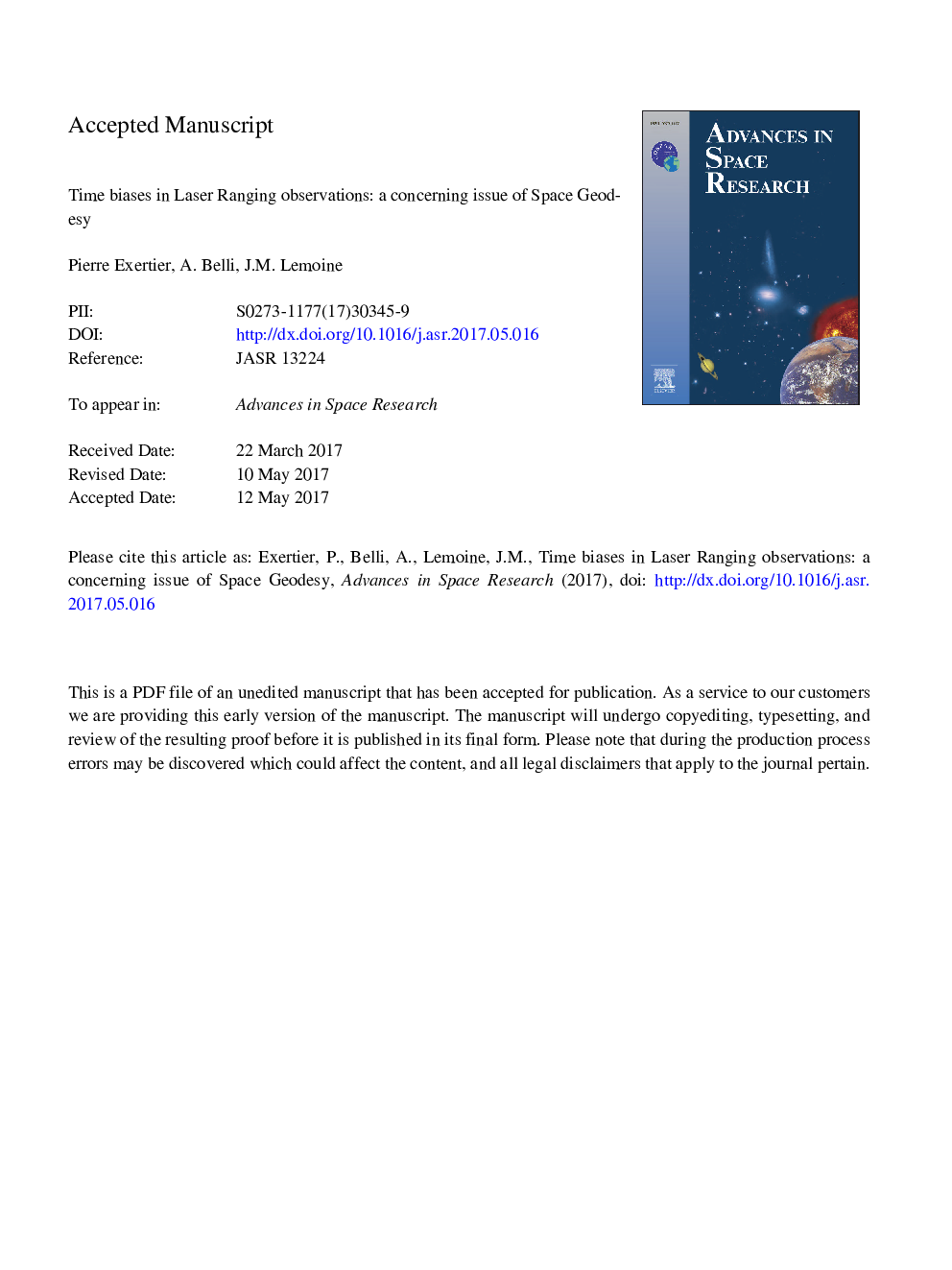| Article ID | Journal | Published Year | Pages | File Type |
|---|---|---|---|---|
| 5486133 | Advances in Space Research | 2017 | 54 Pages |
Abstract
Time transfer by Laser Ranging (LR) recently demonstrated a remarkable stability (a few ps over â¼1000 s) and accuracy (<1 ns) in synchronizing both space and ground clocks over distances from a few thousands to tens of thousands kilometers. Given its potential role in navigation, fundamental physics and metrology, it is crucial that synergy between laser ranging and Time&Frequency (T/F) technologies improves to meet the present and future space geodesy requirements. In this article, we examine the behavior of T/F systems that are used in LR tracking stations of the international laser ranging service. The approach we investigate is to compute time synchronization between clocks used at LR stations using accurate data of the Time Transfer by Laser Link (T2L2) experiment onboard the satellite Jason-2 (Samain et al., 2014). Systematic time biases are estimated against the UTC time scale for a set of 22 observing stations in 2013, in the range of zero to a few μs. Our results suggest that the ILRS network suffers from accuracy issues, due to time biases in the laser ranging observations. We discuss how these systematic effects impact the precise orbit determination of LAGEOS geodetic satellites over a 1-year analysis, and additionally give a measure of the local effect into station coordinates, regarding in particular the effect in the east-west component that is of 2-6 mm for a typical systematic time bias of one μs.
Related Topics
Physical Sciences and Engineering
Earth and Planetary Sciences
Space and Planetary Science
Authors
Pierre Exertier, A. Belli, J.M. Lemoine,
